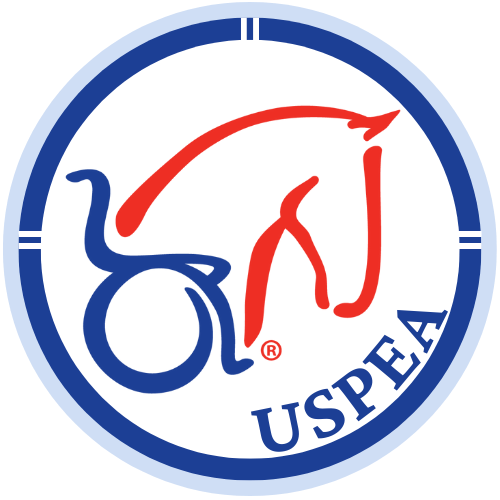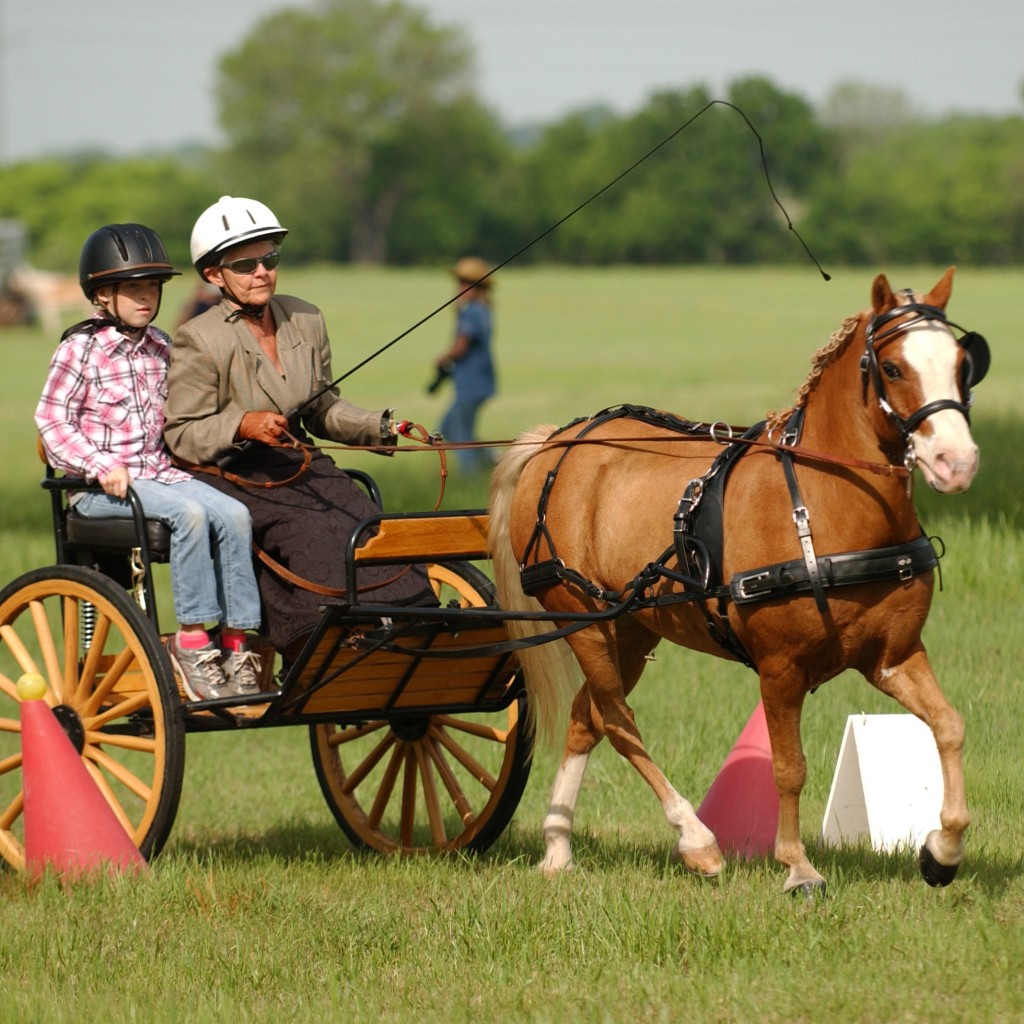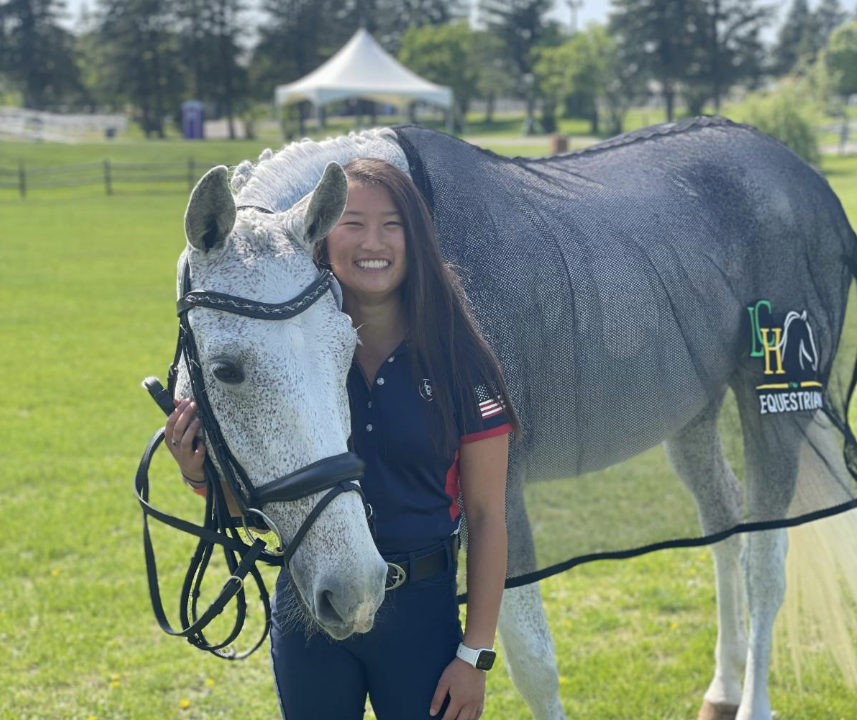July 28, 2012 Meet the 2012 United States Paralympic Equestrian Team
July 31, 2012Pam Johnson
August 18, 2012Karen Gorham Grade 2, Burnet, Texas
Karen Gorham grew up riding horses at her childhood home in Michigan. Both Karen and Bill enjoyed riding but when Bill was taught by Milo Measel to drive, it would be the start of a future career with the driving discipline. After a move in 1967 with her husband Bill the couple settled in Texas. After witnessing Bill Long, an elite driver, in the Four-in-Hand World Karen Gorham and OCharley Championships and numerous other fantastic drivers, Karen and her husband were hooked on the driving discipline. Karen and Bill spent most of the 80′s and 90′s driving horses, raising their children, and traveling to Combined Driving Events where Bill was a Technical Delegate.
In 2005, when Hurricane Rita came barreling towards Texas it would not only be recorded as one of the most intense hurricanes in weather history, but for Karen and Bill it would be a pinpoint for Karen’s future equestrian career as a Para-Equestrian Driver. After an incredible incident involving a truck and horse trailer Karen would live the rest of her life with a prosthetic left arm.
It would be just after the World Equestrian Games in 2010 when Karen would see her first video of a Para-Equestrian Dressage rider. As Bettina Eistel a Para-Equestrian Dressage athlete rode her horse Fabuleax 5 with only her toes, Karen was awestruck by this athletes determination. Karen noted, “I thought that if she could ride with her toes in Dressage, I can surely drive.” From that moment, Karen knew it was her turn to compete. She has traveled the country competing, training, and learning from the top drivers in the world. Throughout the week Karen is consistently training including daily drives with her six-year-old Welsh pony O’Charley, conditioning to keep her horse and herself in peak shape, and attending clinics and horse shows. As the World Para-Equestrian Driving Championships approaches, she is looking forward to representing the United States of America as a Para-Equestrian Driver. Karen commented, “I have so many people to thank all over the United States who have got me to this point. Everyone was so gracious in areas like Windsor, S.C. and Florida, I am in debt to everyone who assisted me as I prepared for my next endeavor. In particular, I wanted to thank Sue Hirzuk for allowing me to lease her pony Tucker. Part of my lease with Sue Hirzuck was that I showed in the Triple Crown of Driving and that her driving pony Tucker maintained his “For Sale” tag. This sweetheart of a pony was a wonderful drive and was sold to a driver in Tennessee just after I leased him. I can’t thank Sue enough for lending this wonderful pony to me. It is people like Sue who continue to make the Para-Equestrian Driving sport flourish.”
She continued, “I also want to thank the amazing Gerard Paagman, and Hardy Zantke for their encouragement since October 2010. I wouldn’t be here without so many wonderful drivers and trainers, my family, and of course the horses Lastly, I would like to thank Georgie and John Green who gave us the push to pursue this discipline and to everyone who founded and currently run the United States Driving for the Disabled, Thank you!”
About Para-Equestrian Driving (courtesy FEI)
Para-Equestrian Driving competitions are modeled on the ridden Three Day Event. It is a triathlon which tests the overall versatility of the driven horse. Modern Horse Driving Trials came into existence in 1968 when HRH Prince Philip of Great Britain initiated the formulation of the rules for the new sport. Prince Philip is a past President of the International Equestrian Federation (FEI) for able-bodied people in all equestrian disciplines.
The competition consists of three phases, spread over three or four days.
Day 1 Dressage
Driven dressage consists of a sequence of set movements driven from memory and using mainly the voice for control. Dressage displays the schooling and obedience of the horse.
Day 2 The Cross Country Marathon with Obstacles
There are three timed sections plus up to six challenging ‘obstacles’ to be driven at speed. The stamina of the horses and the horsemanship of the drivers are stretched to the very limit. This section gets the adrenaline pumping and the mud-flying. Carriage Driving is definitely not for the faint hearted.
Day 3 Cone Driving Competition against the clock.
Cone driving equates to the Show jumping phase of a ridden event. With only centimeters to spare, cone driving requires extreme accuracy on a tricky course, a steady hand, nerves of steel and a well trained horse.
Each phase of the Driving Trials tests the skill and the nerve of the driver and the fitness, obedience and suppleness of the horse. But above all it tests the bond of complete trust between them both.
Most carriage drivers with disabilities have, for one reason or another, found that riding is not physically possible for them. Their love of horses and their determination to participate in equestrian sport has led them to explore new and equally demanding and exciting equestrian challenges.
Great attention is given to all aspects of safety for the horse and the driver. At all times the driver is accompanied by at least one competent able-bodied person. Traditional elegance is expected, horses, drivers, grooms and carriages are all immaculately turned out.
Organization for this sport is very labor intensive requiring 30-40 volunteer Judges, Stewards, Time keepers, Scorers, Vets, Farriers and many others. However a carriage driving competition for disabled drivers can be easily integrated into a competition for able-bodied drivers. The first three World Championships have been held in conjunction with National Championships for able-bodied drivers in Wolfsburg, Germany in 1998, Stadl Paura, Austria in 2000, Greven, Germany in 2002 and also Hopetown, Scotland in 2004.
About the United States Driving for the Disabled, Inc.
United States Driving for the Disabled, Inc., a 501(c)(3) non-profit organization, seeks to improve the lives of physically challenged individuals throughout the United States and Canada by providing the experience of driving horses in a safe and challenging environment. Our mission is to provide the extraordinary benefit of therapeutic driving to as many people as possible through sharing knowledge, experience, and serving as a resource for innovations in adaptive equipment for drivers, trainers, and programs offering carriage driving. The Sybil Dukehart Memorial Fund seeks to provide financial assistance to equip and train disabled drivers through providing scholarship funds to applicants.
USDFD fosters opportunities for drivers to compete in national and international amateur competitions by training and providing financial support for Team USA. For more information please visit www.USDFD.org.
Contact for the USDFD:
United States Driving for the Disabled, Inc.
32450 South Wright Rd.
Molalla, OR 97038
Ph: 503-550-9384
President: usdfdpresident@gmail.com
Offices: usdfd.org@gmail.com


